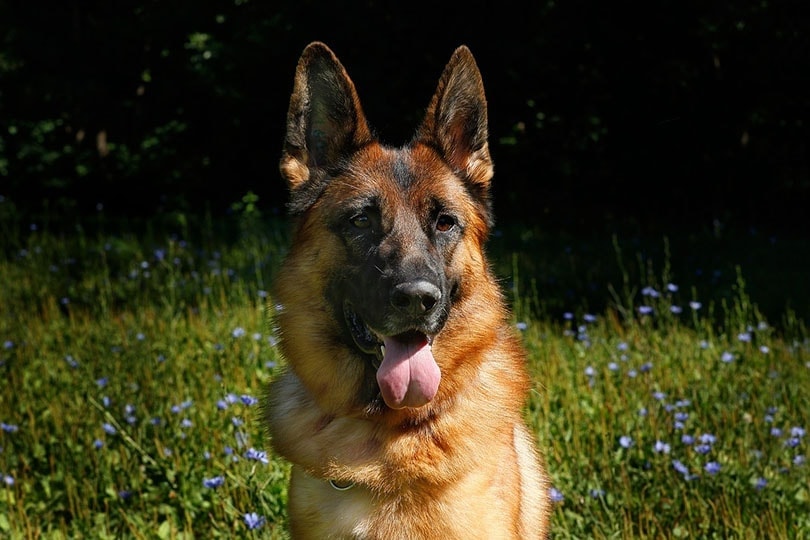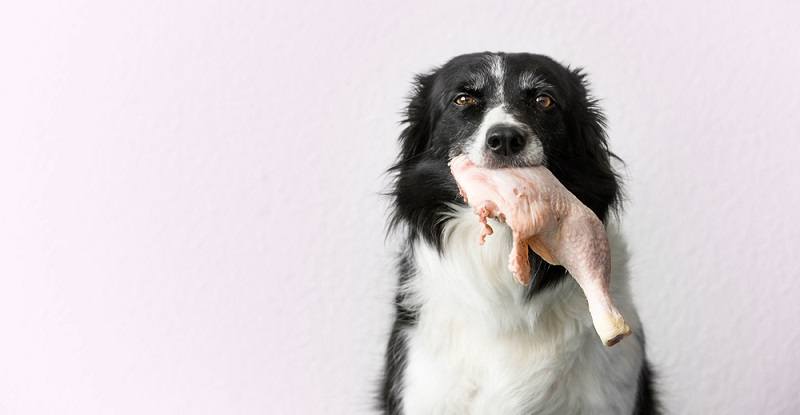Height:
8-15 inches
Weight:
18-30 pounds
Lifespan:
12 to 15 years
Colors:
Solid or mixed variations of black, cream, brown, and occasionally spotted
Suitable for:
Families, singles, seniors
Temperament:
Affectionate, charismatic, playful, and even-tempered
The Frengle, also commonly known as a French Bulldog Beagle, is a cross between, you guessed it, a French Bulldog and a Beagle. They are highly sociable, playful, and friendly dogs, traits that are commonly found in both of their parent breeds. They inherit another common trait from their parent breeds — stubbornness — which can make them a challenge to train.
Despite its name, the French Bulldog was actually first bred in Nottingham, England, in the early 1800s and was bred in order to create a smaller version of the English Bulldog. The Beagle’s origins can be traced back to the 16th century, where it was used as a smaller breed of hunting hound in England. Little is known about the origins of the Frengle, apart from the fact that they are a fairly new crossbreed that originated in the United States.
Beagles are commonly used today as sniffer dogs and guide dogs due to their high intellect. French Bulldogs can be adequate ratters but are most commonly kept exclusively as companion pets.
Frengles can closely resemble either of their parent breeds but are usually a varied mix of both. They have a short muzzle and stocky head and short and wiry fur and may sometimes have the Bulldog’s trademark wrinkles. They are short and strong, with a wide chest and short legs. But what they lack in stature, they make up for in personality. The French Bulldog’s bat-shaped ears are occasionally present, but in Frengles, they are usually long and floppy like a Beagles. Frengles make great family pets, and if socialized early, they get on great with both strangers and other dogs and pets.
Frengle Puppies — Before You Buy
What’s the Price of Frengle Puppies?
Most Frengle puppies come from first-generation breeding, and Frengles are rarely bred together. Their parent breeds are both highly popular and expensive, so you can expect a similar high price for a Frengle puppy. The price will also depend on the breeder, location, and availability, but on average, you can expect to pay $200-$700 for a Frengle puppy.
3 Little-Known Facts About Frengles
1. They are not French.
One half of the Frengle’s origins, the French Bulldog, has a somewhat misleading name, as they were actually first bred in England. Their breeders wanted a smaller sized English Bulldog that was easier to manage and would keep them company while they worked. The industrial revolution forced many workers to relocate to France, where the French fell in love with the new breed of dog and named it after their home.
2. They can be stubborn.
While Frengles are friendly and affectionate, they have a well-known stubborn streak. This can make them somewhat difficult to train at times, but with early socialization, this can be made easier.
3. Frengle puppies love to chew.
It is well-known that most puppies will go through a chewing stage and destroy anything they find lying on the floor. Frengles have a much higher than average propensity to chew during the puppy stage, and if not properly trained, they will continue this habit to adulthood.

Temperament & Intelligence of Frengles
Frengles are affectionate, intelligent, and playful dogs with a ton of personality. Their calm and gentle nature makes them a great companion, and they are well-known for being a docile and even-tempered breed.
Are These Dogs Good for Families?
Frengles are great family dogs. Their Beagle heritage makes them friendly and playful, and they will love running around with children and playing games. That said, their hunting origins mean that they may need a great deal of exercise if they have dominant Beagle traits. The French Bulldog may not have the stamina and energy of a Beagle, but they make up for it with their calm temperament and entertaining and comical personality. The combination of the two makes for a fun and dependable family pet.
Does This Breed Get Along With Other Pets?
Frengles will get along famously with other dogs and family pets, provided that they are socialized early on. They love to be around people and will love another family pet around to play with. Their calm and often regal demeanor makes them far less aggressive than other dogs in general.
They do have an innate prey drive due to their Beagle heritage and will go after smaller family pets if given the chance. This can be mitigated by early introduction to other pets and early socialization.
Things to Know When Owning a Frengle
Food & Diet Requirements
A Frengle is a small dog but can be high energy at times, so its diet should be optimized accordingly. Most dogs need around 25-30 calories per pound per day to maintain a healthy weight, so the average Frengle will need to get about 450-480 calories a day to maintain a healthy weight. Frengles can vary in size, but around 1 or 2 cups of dry food a day should be sufficient for the average Frengle. Wet food can be added to their diet, which will also give them additional moisture. Dry kibble can help keep their teeth clean and reduce tartar build-up and dental issues.
Bulldogs tend to inhale air when eating, and this can cause bloating and flatulence. They have fairly sensitive digestive systems, and this can carry on to their Frengle offspring. This trait is further exacerbated by foods like soy, beans, dairy products, and wheat, so these should all be ideally avoided. Small-sized dry kibble can help them eat more slowly and help them avoid ingesting too much air.
Beagles are known for eating almost anything, so they are not picky when it comes to food. Their high energy levels mean they will benefit more from eating two small meals a day, as opposed to a single large one.
Protein is essential for any dog, but both Bulldogs and Beagles will thrive from having slightly more than average. However, too much protein can quickly lead to obesity, so the amount of protein should be closely monitored and then altered according to how active your Frengle is and their age. Around 1 gram of protein per pound is ideal.
Exercise
Like all dogs, Frengles will need daily exercise to stay healthy and happy, especially if they have more traits from their Beagle heritage. Growing Frengle puppies especially need loads of exercise and play to burn off excess energy. A common rule-of-thumb is 5 minutes for every month of age, twice a day, until adulthood.
The Frengle can be a fairly active breed, and they love physical activities like walking and running with their owners. A minimum of 30 minutes a day is recommended, but they should ideally get 1-2 hours. Toys, balls, and stick games are bound to be a hit with Frengles and will aid in keeping them both mentally and physically stimulated. These toy games will also help keep their chewing instincts at bay.
Bulldogs have a reputation for being docile but can exert a great deal of energy when excited. Beagles, on the other hand, are particularly high-energy dogs, and will need regular exercise in order to burn it off. The Frengle is usually a good mix of the two, enjoying lounging on the sofa but also benefiting greatly from physical activity.
A lack of sufficient exercise with any dog breed will quickly lead to bad behavior, including barking, chewing, and aggression, and daily exercise is essential to having a well-behaved dog.
Training
Frengles can be a challenge to train due to the stubbornness inherited from their Bulldog parents. It’s not that they are naughty or unable to follow commands, they just can’t be bothered! This can be an advantage, though, as they often can’t be bothered to behave badly either!
Early socialization and reward-based training will help get them used to commands quicker and encourage them to enjoy and look forward to training sessions. As with most dogs, patience is key to good training, and the reward of a well-behaved Frengle is worth it. Training sessions of 5-10 minutes at a time is ideal, as Frengles may lose concentration fairly quickly. They will respond well to positive reinforcement training, as it will greatly appeal to their desire to please their owners.
Grooming ✂️
Due to its short and wiry coat, the Frengle is a fairly low-maintenance dog. That said, they do shed, and are not ideal for owners who suffer from allergies. Both the French Bulldog and Beagle are known to be medium shedders, and the Frengle is generally the same. Even though the Frengle has a short coat, brushing is still necessary. While the occasional brush is a good idea, bathing should be done only when they are muddy or dirty, as both the parent breeds are known to suffer from dry skin. Their short coat also makes them sensitive to cold weather, and they should have a sweater when outside in cold climates for extended periods.
Regular nail clipping is recommended for all dogs, as long nails can be painful for them and even cause arthritis if left unmanaged. Brushing teeth regularly will prevent diseased gums and teeth and keep your pooch’s breath smelling fresh.
Due to the long droopy ears of some Frengles, there is a lack of airflow to the ear canal, and ear infections can be fairly common. It is important to keep the inside of their ear canals dry and perform regular checks for redness or discharge. If your Frengle is showing discomfort by incessantly scratching and rubbing their ears, a check-up with the vet may be necessary.
Health and Conditions
Hybrid vigor, the resulting genetic diversity from breeding two purebred dogs, will usually minimize health issues that purebred dogs can often suffer from. That said, Frengle offspring can still develop issues relating to their parent breeds.
These issues can include hip dysplasia, a condition where the dog’s hips don’t develop correctly, allowing the hips to partially dislocate. Another common condition is epilepsy, in which your dog can experience mild to severe seizures. These seizures can be as harmless as a mild twitch or uncontrollable shaking that can last up to several minutes. Mild cases of epilepsy don’t require any medical intervention, but more severe cases will often require medication to manage. Hypothyroidism is also a fairly common illness in Bulldogs and occurs when your dog is not secreting enough thyroid hormones. It is usually easily managed with appropriate medication.
Bulldogs and French Bulldogs commonly have mild eye issues, mainly cherry eye and entropion. These conditions are typically genetically inherited, so there is a chance of them being handed down to your Frengle. Cherry eye is the term used for a prolapsed third eyelid in dogs and was historically remedied by surgical removal. However, it is easily remedied nowadays with an anti-inflammatory ointment. Entropion is a condition in which the eyelids roll inward, allowing dust, hair, and eyelashes to irritate your dog’s corneas. In most dogs, this is nothing more than a mild irritation, but it can cause vision problems long term.
Unless you intend on breeding your Frengle, it is widely recommended to neuter males and spay females, as this has many associated health benefits. For males, it assists in prevention from testicular cancer, will make them less aggressive, and will also prevent them from wandering off looking for females. Spaying a female will help assist in the prevention of uterine infections and cancer. It is recommended to spay a female before her first heat, as this will further help prevent these complications. If you do intend to breed a female Frengle, it is far better for her health to wait until she has experienced at least one or two heats.
- Skin disorders
- Cherry eye
- Entropion
- Cancer
- Hip dysplasia
- Epilepsy
- Hypothyroidism
Male vs Female
Neutered and spayed dogs are generally calmer and less aggressive than un-neutered or un-spayed dogs, and this is an important distinction to make when considering male and female differences. Additionally, most of the time, a dog’s behavior and personality are more affected by their upbringing and environment than their sex. That said, there are small but noticeable differences in male and female Frengles.
There isn’t a huge difference in appearance in male and female Frengles, though the males are usually slightly larger and heavier. Male puppies tend to be more mischievous and energetic, where females are shy and a bit more relaxed. This, along with the fact that females mature quicker than males, makes them easier to train. Contrary to usual dog behavior, females tend to be more aggressive than males, with a tendency to nip if teased. Females are also more loyal than males and will often attach themselves to one owner. That said, this is largely anecdotal and may differ widely depending on your Frengle’s unique genetic traits and upbringing.
Final Thoughts
The Frengle is a unique and lovable dog who is suited perfectly for families. They are highly charismatic and entertaining and can be fun to have around with their comical nature. They are ideal lapdogs, as they love to cuddle on the sofa, but they can also be high energy and will love daily exercise. They are short-haired and thus easily groomed, but they can be a challenge to train due to their sometimes stubborn temperament. They are great with kids and other pets provided that they are socialized early on, and they will make fast friends with other dogs.
If you are looking for a low-maintenance dog with an abundance of character, the Frengle may just be the ideal choice.
Related Reads:
Featured Image Credit: Florian Bender, Shutterstock










